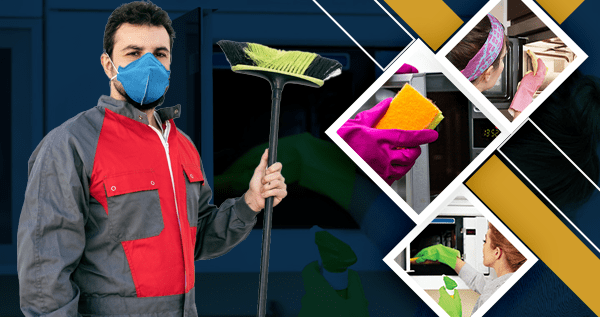Cutting boards are an essential tool in any kitchen, but they can also harbor harmful bacteria if not cleaned properly. These bacteria can contaminate your food and pose a risk to your health. To ensure a sanitary kitchen environment, it is important to know how to clean your cutting boards effectively. In this article, we will provide you with expert tips on how to maintain clean cutting boards and minimize the risk of bacterial contamination.
Why is it important to clean your cutting boards?
Before we dive into the cleaning process, it is crucial to understand why cleaning your cutting boards is so important. Cutting boards, especially those used for meat, poultry, or fish, can harbor harmful bacteria like Salmonella, E.coli, and Listeria. These bacteria can cause foodborne illnesses and have serious health consequences. By cleaning your cutting boards regularly, you can eliminate these bacteria and maintain a safe and sanitary kitchen.
The importance of different cutting board materials
There are various types of cutting board materials available, each with its own cleaning requirements. Understanding the different materials will help you choose the most suitable cleaning method for your cutting boards.
1. Plastic cutting boards
Plastic cutting boards are the most common type due to their affordability and ease of maintenance. To clean a plastic cutting board, follow these steps:
- Scrape off any food residue using a spatula or a brush with stiff bristles.
- Wash the cutting board with hot, soapy water. Make sure to use a dish soap that is designed to kill bacteria.
- Rinse the board thoroughly with hot water to remove any soap residue.
- To further sanitize the board, you can use a mixture of one tablespoon of bleach per gallon of water. Apply the mixture to the cutting board and let it sit for a few minutes before rinsing it off with water.
- Dry the cutting board with a clean towel or air-dry it vertically to prevent moisture buildup.
2. Wooden cutting boards
Wooden cutting boards are not dishwasher safe and require more delicate care compared to plastic boards. Here’s how to clean a wooden cutting board:
- Scrub off any food particles using a brush with soft bristles or a sponge.
- Wash the cutting board with hot, soapy water. Avoid using excessive water as it can cause the wood to warp or crack.
- Rinse the board well with hot water and pat it dry with a clean cloth.
- To sanitize the wooden cutting board, you can use a mixture of one part white vinegar to four parts water. Apply the solution to the board and let it sit for a few minutes before rinsing it off.
- Once a month, it is essential to condition your wooden cutting board with food-grade mineral oil to prevent it from drying out and cracking. Apply the oil generously and allow it to penetrate the wood overnight before wiping off any excess oil.
3. Bamboo cutting boards
Bamboo cutting boards are favored for their durable and eco-friendly nature. Similar to wooden cutting boards, they require special care. Follow these steps to clean a bamboo cutting board:
- Remove any food remnants from the cutting board using a brush or a sponge.
- Wash the board with hot, soapy water. Ensure that the soap you use is safe for bamboo products.
- Rinse the board well with hot water, making sure to remove all soap residue.
- To sanitize the bamboo cutting board, you can use a mixture of 3% hydrogen peroxide and water. Apply the mixture to the board, let it sit for a few minutes, and rinse it off thoroughly.
- Dry the board with a clean cloth and store it vertically to allow proper air circulation.
Tips for maintaining clean cutting boards
Regular cleaning is essential, but there are additional measures you can take to maintain clean cutting boards and reduce the risk of bacterial contamination:
1. Use separate cutting boards
To prevent cross-contamination, it is advisable to use separate cutting boards for raw meat, poultry, seafood, fruits, and vegetables. This ensures that any bacteria present on raw products do not contaminate other food items.
2. Replace worn-out cutting boards
While regular maintenance can prolong the lifespan of your cutting boards, it is important to replace them when they become deeply scratched or develop deep grooves. These crevices can harbor bacteria that are difficult to remove, even with thorough cleaning. You can rely on specialist cleaning services to help keep your kitchen utensils, including cutting boards, sanitized and safe.
3. Avoid soaking your cutting boards
Excessive moisture can damage wooden and bamboo cutting boards. Avoid soaking them for prolonged periods and dry them completely after each use to prevent mold and warping. If you’re looking for thorough deep cleaning, consider deep cleaning services for your kitchen area.
4. Use a cutting board spray
Consider using a food-safe cutting board spray. These sprays are specially formulated to eliminate bacteria and neutralize odors. They provide an extra level of sanitation and keep your cutting boards smelling fresh.
5. Regularly inspect for damage
Inspect your cutting boards on a regular basis. If you notice any deep grooves, cracks, or signs of mold, it’s time to replace them. Early detection of damage helps ensure a safe cooking environment.
Conclusion
Clean cutting boards are the foundation of a sanitary kitchen. By following the proper cleaning techniques for each cutting board material and implementing maintenance tips, you can ensure that your cutting boards remain free from bacteria and safe to use. Remember, investing time and effort in cleaning your cutting boards is an investment in your health and the well-being of your loved ones. If you prefer to leave this task to professionals, Crystal Facilities Management is here to assist you with our high-quality cleaning services. Contact us today for a spotless and sanitary kitchen environment!














